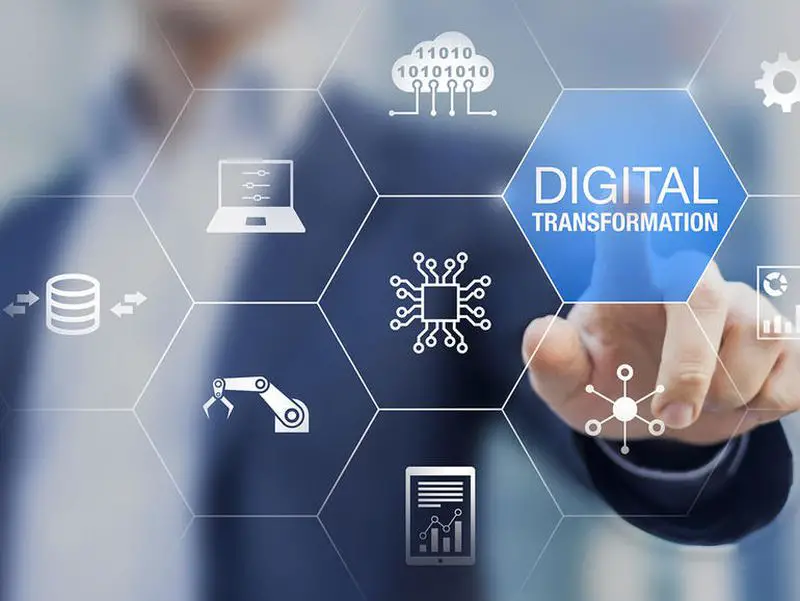Today we’ll tell you about the top 3 digital transformation trends of 2021.
The year 2021 will be one of the most transformative in history. According to Microsoft, in just two months we have seen the digital transformation of two years. The pandemic taught us that while many businesses around the world struggled to adapt to numerous national shutdowns, technology played a vital role in keeping economies afloat.
Top 3 digital transformation trends of 2021
This year, the focus will shift from survival to recovery, and many companies will re-examine and re-evaluate their long-term strategy, especially as it relates to digital. To this end, a review of what are the main technological trends implemented in the market is important.
Customer service developed with Artificial Intelligence
Undoubtedly, 2020 proved to be the push many companies needed to truly embrace AI-based technologies. At the height of the pandemic, customer service queues and wait times increased significantly as the volume of calls received increased, inevitably leading to plummeting customer satisfaction.
So, in the eyes of many companies, it was the COVID-19 pandemic that helped move AI from being an interesting concept to an essential tool for keeping businesses running, while ensuring customer and, why not, employee satisfaction.
This year, customer service centers and commerce will accelerate their transition to AI, but before rushing to implement AI, they will need to distinguish between rudimentary customer service environments (such as basic chatbots and interactive voice response systems) and true conversational intelligence through a digital employee, who can handle and triage customer calls and queries from the outset in an emotionally aware manner, and then answer questions and process queries, and only redirect calls to human agents when necessary. Consequently, they significantly improve the experience of overburdened human agents who are currently unable to respond quickly enough to ensure a positive and satisfying customer experience with the brand.
In this context of the new post-coronavirus era, digital employees developed with cognitive AI will be vital to ensure that companies can maintain the same level of communication and satisfaction with their customers. As we move into 2021, we will witness an increase in human-machine collaboration to deliver a scalable solution that enhances both employee and customer experience.
HyperAutomation

In 2020 we will also witness as never before, an increase in the number of people working remotely and businesses with open digital channels. Traditional companies have been forced to move their services online or face potential collapse. In this context, we have seen a huge increase in demand for software services, especially tools that facilitate remote working, video conferencing, CRM, and ERP.
Among the major trends in digital transformation that we will see in the coming months is hyper-automation. With the increasing move towards remote working, companies will need to start leveraging the technology that ties these systems together, so that everything can work seamlessly: what has been termed HyperAutomation: the process by which a company’s systems are integrated and automated end-to-end on a single, unified platform. This HyperAutomation will enable companies to take advantage of the continued expansion of digital services, such as AI and the cloud while streamlining operations in departments such as finance, sales, IT, or HR. Hyper-automation, which has already been highlighted by Gartner as one of the top technology trends for this year, will help companies recover, improve their operational efficiency, and empower employees to focus on revenue growth.
The hybrid workforce
In 2020, next-generation AI and automation have underpinned and supported the development of different career paths in different industries. In insurance and banking, for example, AI-developed digital employees have worked side-by-side with human agents in the customer service department acting as “whispering agents”; that is, these digital employees have provided their human counterparts with the information they need to respond to customer queries, with a deep understanding of complex industry regulations.
The potential for AI to free up hours of administrative work for executives of various kinds is enormous. Not only does this present a huge opportunity to improve business productivity by focusing more of these executives’ time on true value-added tasks, but it will be a key enabler for employers to reduce employee workloads.
This is likely to continue this year with the explosion in the development of AI-developed customer care healthcare services. The world will become more focused on disease management in general post-pandemic and, as a result, there is likely to be more pressure on healthcare professionals managing routine day-to-day patient reviews in addition to patients with Covid-19 sequelae. For conversational AI to manage this overload represents a huge opportunity, as it allows professionals to focus on high-value-added patient care.





